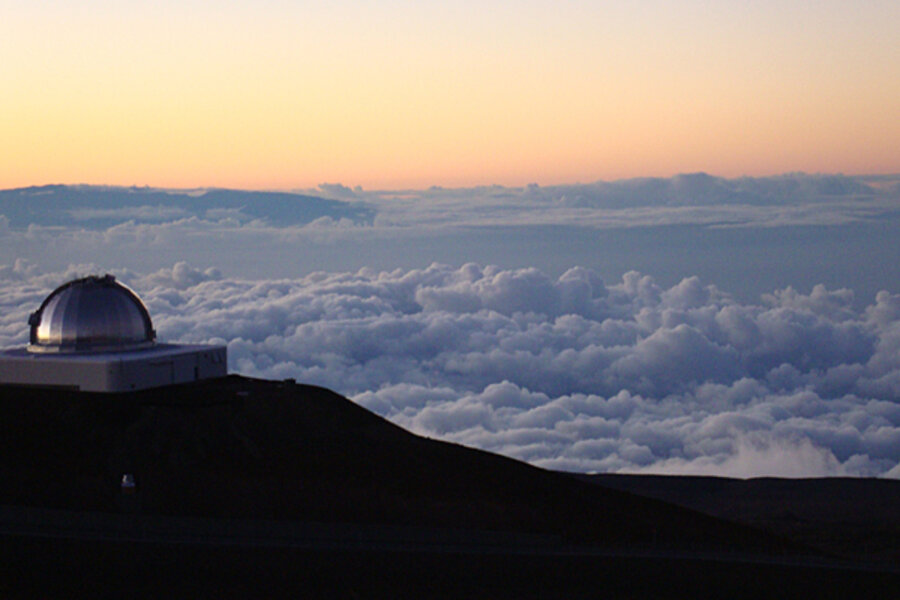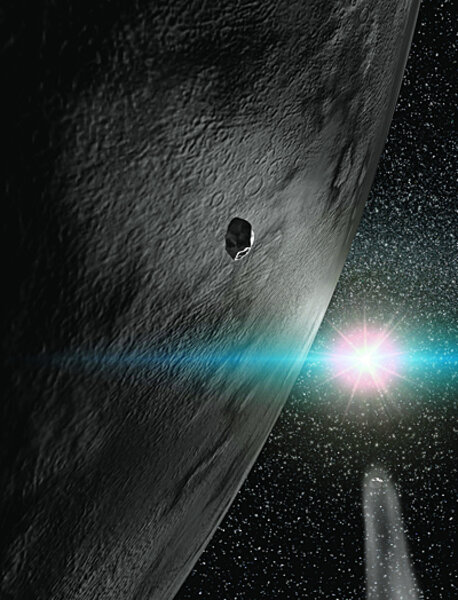Did asteroids bring water to Earth?
Loading...
It may be time to rename asteroid 24 Themis. Perhaps 24 Thermos might be in order.
Two teams of astronomers have independently detected water ice and organic compounds on 24 Themis, a discovery that could add weight to the notion that asteroids brought water to Earth's surface.
Solar-system researchers had already amassed strong clues that carbon-rich asteroids such as 24 Themis contained some water and organics. But in the past, the water has been locked up in mineral form on these objects. This discovery, published in the latest issue of the journal Nature, marks the first time scientists have detected either on the surface of an asteroid.
Why the connection to water on Earth? The collision that resulted in the formation of the moon 4.5 billion years ago would have heated Earth and vaporized any water the young planet had gathered. Comets had been a leading candidate as sources of replacement water. But the forms of hydrogen in water molecules bound in asteroids are a closer match to those found in seawater than are those found in water comets carry.
24 Themis, discovered in 1853, is 198 kilometers (123 miles) in diameter and orbits the sun as part of the solar system's asteroid belt, sandwiched between the orbits of Jupiter and Mars.
The discovery of water ice on the surface of 24 Themis is unexpected, says Richard Binzel, a planetary scientist at the Massachusetts Institute of Technology in Cambridge, Mass.
Typically, ice on the surface of an object such as 24 Themis would quickly vaporize and vanish, he says. "Seeing freshly exposed ice on the surface, now that's a surprise. It has to be replenished from below, somehow."
24 Themis didn't give up its frosty cache easily, explains Andrew Rivkin, a planetary scientist at The Johns Hopkins University's Applied Physics Laboratory and the leader of one of the two teams reporting the results.
His team, along with that of the University of Central Florida's Humberto Campins, used the National Aeronautics and Space Administration's Infrared Telescope Facility atop Hawaii's Mauna Kea to examine 24 Themis's surface.
"It's a difficult region to work in," says Dr. Rivkin of the hunt for signatures of cosmic water at infrared wavelengths. Earth's atmosphere is laden with water vapor. It's presence swamps signatures of water from celestial objects in all but a few infrared wavelengths.
In their observations of 24 Themis, "there was something that looked kind of weird," he says. "We initially thought: Well, it kind of looks like it could be ice." They made several measurements over a six-year period "just to be sure we weren't being fooled." Once the team had collected its 2008 measurements, "we were confident enough to go: 'OK, this is ice,' " Rivkin says.
Although this and the parallel observations from Dr. Campins' team were firsts, Rivkin says the slap-the-forehead moment for his team came with the detection of organic compounds on 24 Themis.
The estimated lifetime for the surface ice – thought to exist as extremely thin coatings on dust grains – is on the order of thousands of years, Rivkins' team notes. But the team also calculates that enough water is present in the asteroid's top 2 kilometers of material that at current loss rates, it would outlast the age of the solar system.
Campins's team suggests that the surface ice gets replenished as micrometeoroids strike 24 Themis's surface, breaking off and vaporizing subsurface ice it encounters. That vapor refreezes around the dust grains at the surface.
The discovery also tightens a connection researchers have proposed between 24 Themis and a recently discovered class of comets in the main belt. Perhaps one-third of these main-belt comets trace their roots to a massive collision that spawned 24 Themis and its far-flung family of asteroids, explains Michael A'Hearn, a planetary scientist specializing in comet and asteroid studies at the University of Maryland.
"Finding the ice supports the family association," he explains. "Now, the key question is whether Themis and its family are a one-off, or the first of many."
And beyond the scientific interest in ice on the asteroid's surface lies a practical one, adds MIT's Binzel. If asteroids rich in accessible water ice are common, they hold the potential of serving as oases for future astronauts during interplanetary trips.
Related:
Blog: Amateur astronomer finds a hole punched in Jupiter






